All products featured are independently chosen by us. However, SoundGuys may receive a commission on orders placed through its retail links. See our ethics statement.
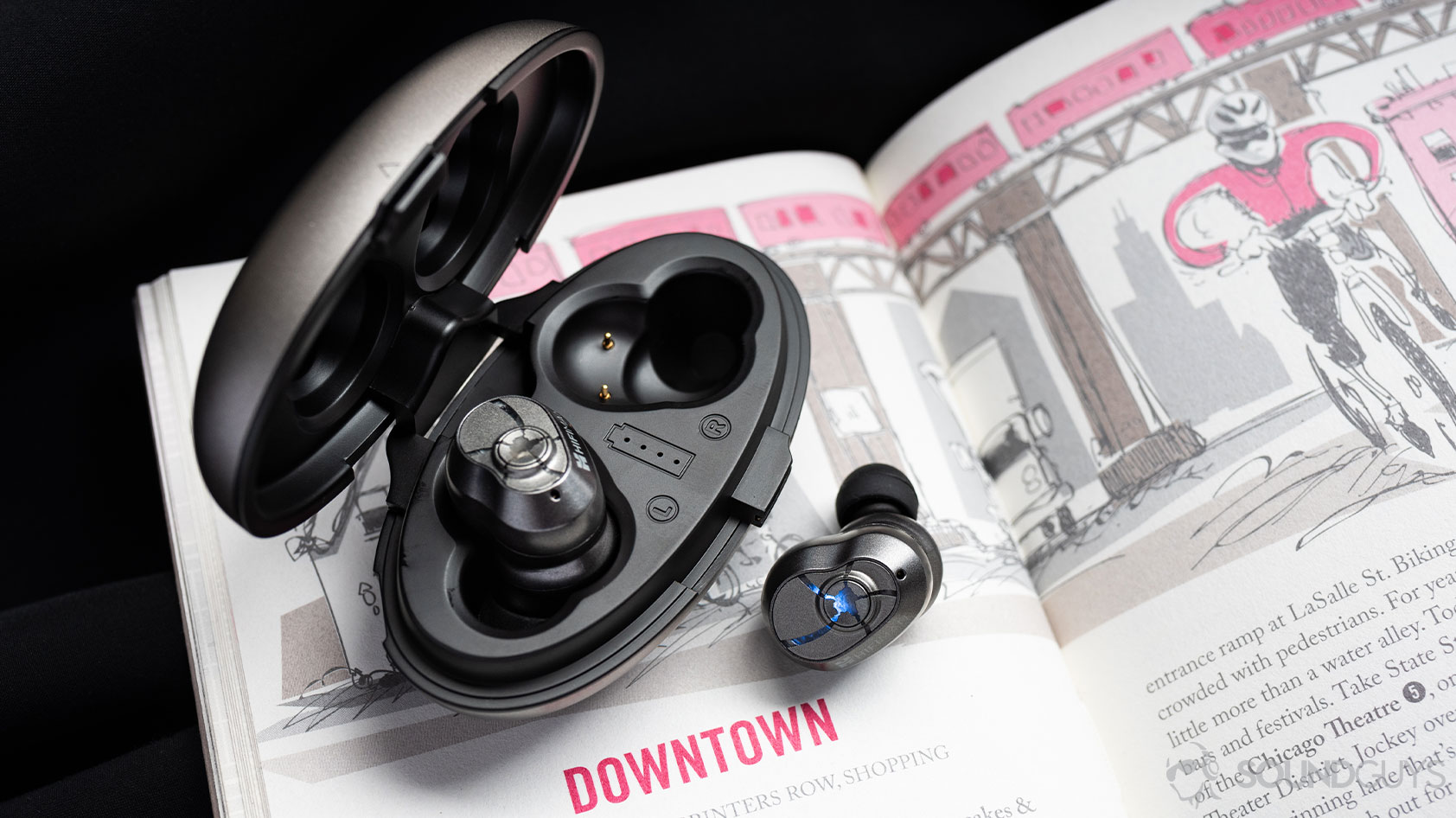
HIFIMAN TWS600 review
March 11, 2021
HiFiMan TWS600
Sometimes we just want to indulge our inner fantasy, and the HIFIMAN TWS600 do just that. These earbuds look like a sci-fi movie prop taken straight from a film set. While the creative design is refreshing: it won’t appeal to all listeners.
Editor’s note: this HIFIMAN TWS600 review was updated on March 11, 2021, to include a contents menu and address more recent true wireless earbuds as alternatives to this headset.
Who should get the HIFIMAN TWS600?
- Frequent video streamers should pick up HIFIMAN’s true wireless earbuds because they’re latency-free when watching video, a rare achievement for Bluetooth earbuds.
- Sci-fi fans will appreciate the fun, functional design of these earphones that support a host of onboard controls and look neat, too.
What’s it like to use the HIFIMAN TWS600?

The HIFIMAN TWS600 is nice to use, because the earbuds are easy to grip and remove from the charging case. The angled nozzles rested comfortably in my ears, and never caused fatigue even after hours of use. Having such a reliable fit meant I wasn’t concerned about them flying out during exercise—despite the lack of stabilizing wing sleeves. While the TWS600 wouldn’t be my first choice for workout earbuds, it definitely passes as a headset that can withstand intense movement.
Start here: Ultimate headphone buying guide
Each earbud houses a multifunction button to enable onboard controls, which made it easy for me to control playback, adjust volume, and access Google Assistant by holding either button for two seconds. I appreciate when true wireless earbuds include volume controls, but found something odd: to increase the volume, users have to press the left button three times, but to skip to the next track, users have to press the right button twice. This felt counterintuitive; my gut reaction was that “volume up” and “next track” should be on the same earbud, and this took some getting used to.
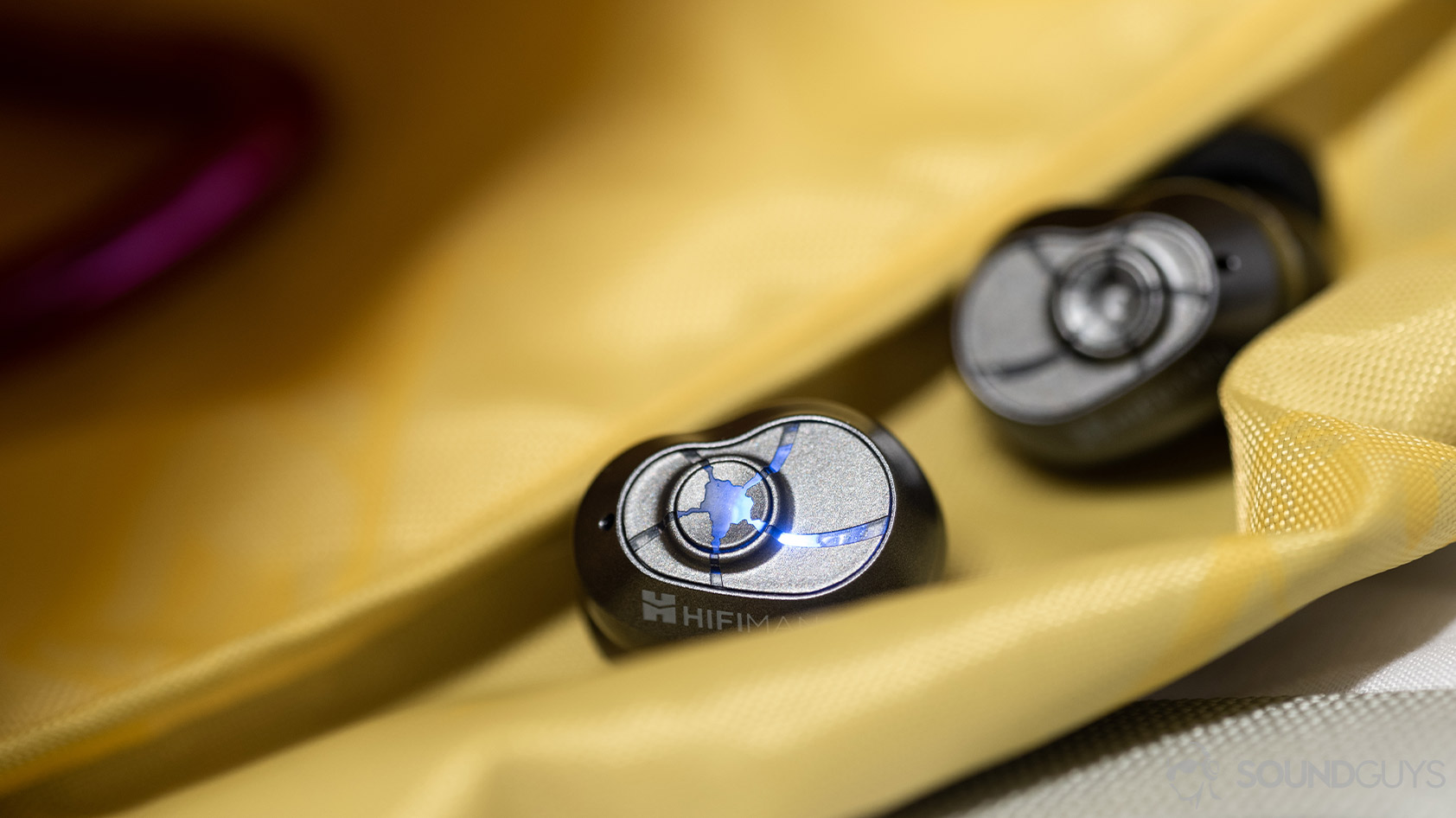
The USB-C charging case is shaped like the Bowers & Wilkins Zeppelin Air Wireless speaker, and matches the grey coating on the earbuds. Its magnets are strong, and it never flew ajar when I dropped it. A weak hinge joins the top and bottom together and makes a snap sound when the lid is pushed back all the way. Don’t worry; at first, I thought this was the sweet sound of the case breaking, but it’s just a silicone component resisting a plastic edge.
The earbuds fit really well, which makes it easy to listen in comfort for hours.
Four vertically aligned LEDs alight when the case is fully charged and each LED corresponds to 25% of the case’s capacity. Once all four lights are out, you have to plug the case into a charger, and it only takes 1.5 hours to completely charge this high-capacity case.
Do you really have to burn-in the earbuds for 10-20 hours?
Probably not. In this case, it doesn’t affect the sound in a notable, really. Not in any way that would make you think “wow, that’s a huge difference!”
But since it was listed as a potential, we put together a fun experiment just to see if burning in the headset would make a difference. We subjected the headset to a constant 75dB(SPL) output for 20 hours, totaling 30-plus hours of playtime when taking into account non-objective testing usage.
The frequency response is virtually unchanged after the burn-in period, the distortion wasn’t really any different either, and while we could have gotten a little crazy with other measures—we decided it was a bit much to be doing for a set of affordable true wireless earphones. You should just enjoy your music as-is straight out of the box and let your ears get used to the sound.
Do the earbuds stay connected?
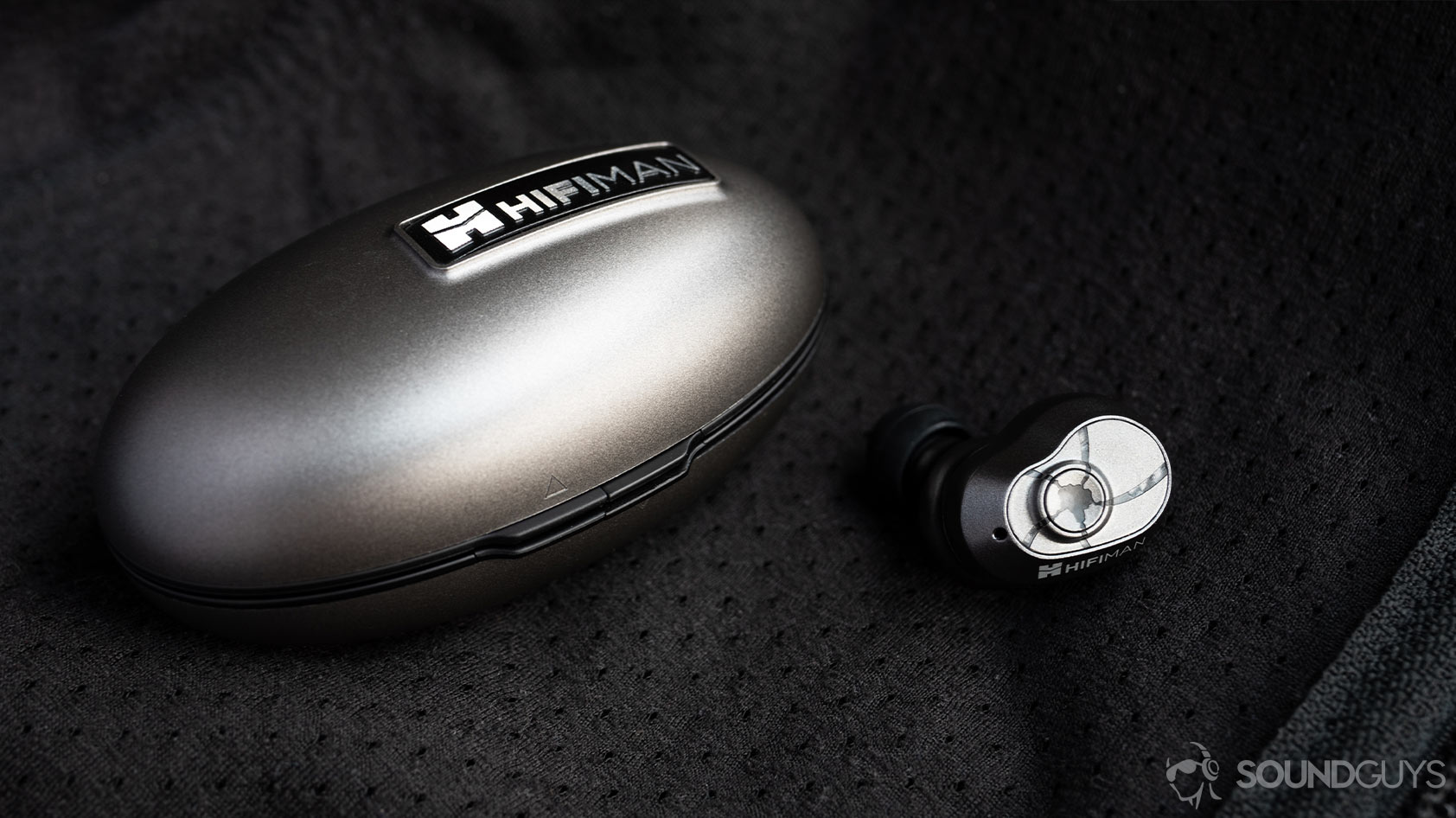
HIFIMAN makes bold claims with these Bluetooth 5.0 earphones regarding connection strength: it posits a 150-meter wireless range (when in an open field). This is neat, but not very realistic as few of us spend our days in desolate, flat fields. Indoors, I rarely got more than the standard 10 meters from my phone before connection stutters became present.
Bluetooth codec support is limited to AAC and SBC. The former is fine for iOS users and works reliably but it struggles to consistently stream high-quality audio on Android. This isn’t a huge deal though as raw audio detail isn’t very clear with this headset. The earbuds don’t support multipoint connectivity, so you have to manually switch between devices.
Is there lag when watching video?
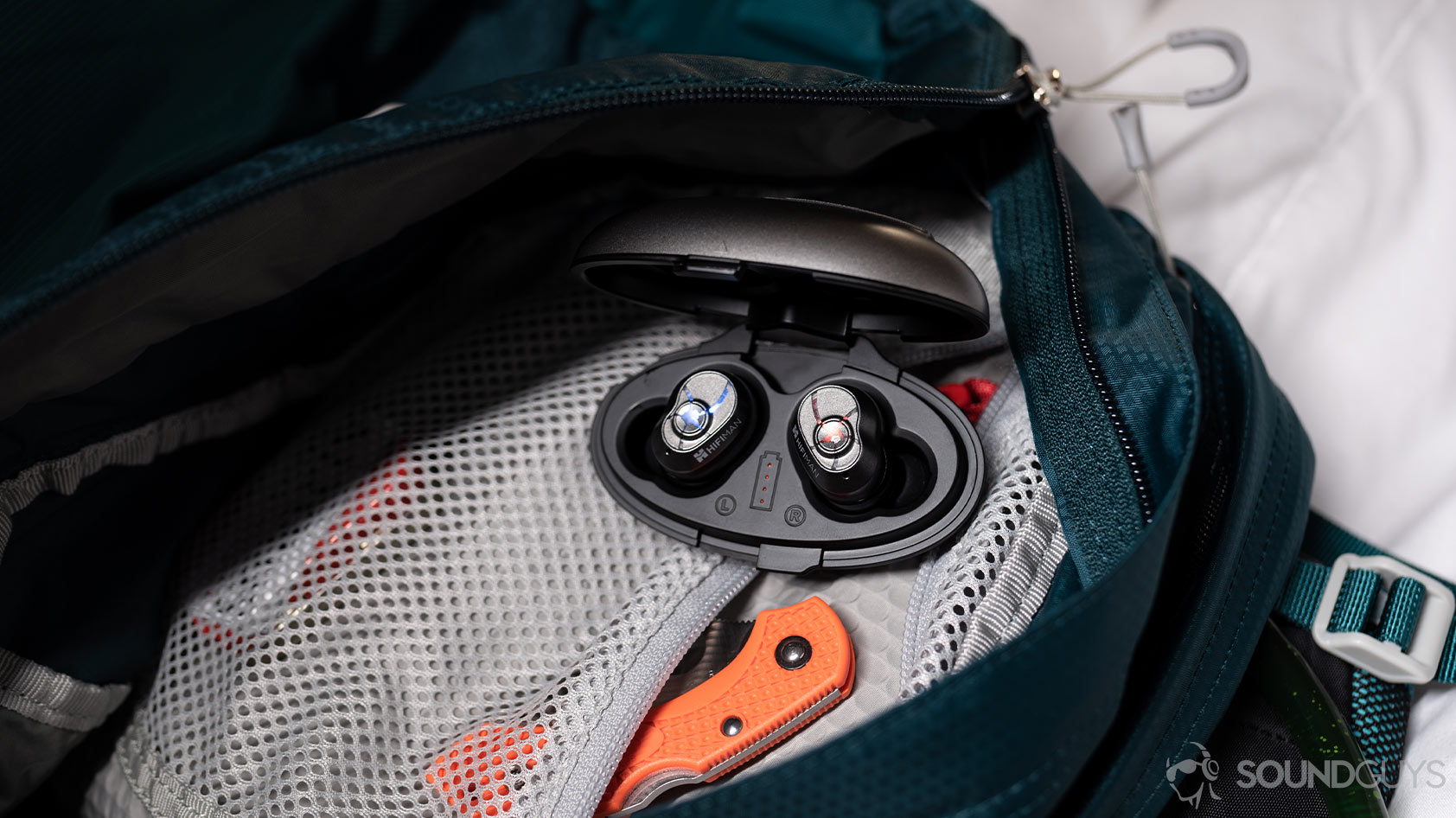
No, there’s no audio-visual lag when using the HIFIMAN TWS600 which is pretty remarkable seeing how very few true wireless earbuds can pull this off well. I’m even more impressed with the lack of lag, because I mainly used the earbuds with my Samsung Galaxy S10e smartphone. If you’ve hung around this site long enough, you know that the codec is a little hit or miss on Android. But it seems like it was the right choice here—especially at this price point.
I also tested the earbuds on an old Macbook Pro running OS 10.15.3, and video lag was absent there. I did, however, notice minimal lag on my PC—but that seems to be more dependent on the hardware. If you run into lag with your headphones, be sure to rule out the possibility that it’s your computer that’s the source of your frustrations. Nine times out of ten, it’s a shoddy wireless card.
How long does the battery last?
The earbuds lasted 5 hours, 2 minutes on a single charge and required an hour to top them back up via the high-capacity charging case. This tapered oval of a thing holds an additional 38.5 hours of playtime for on-the-go listening and takes just 1.5 hours to charge via included USB-C cable. HIFIMAN makes no mention of quick charging which is a bummer, and a surprise.
Do the earbuds sound good?
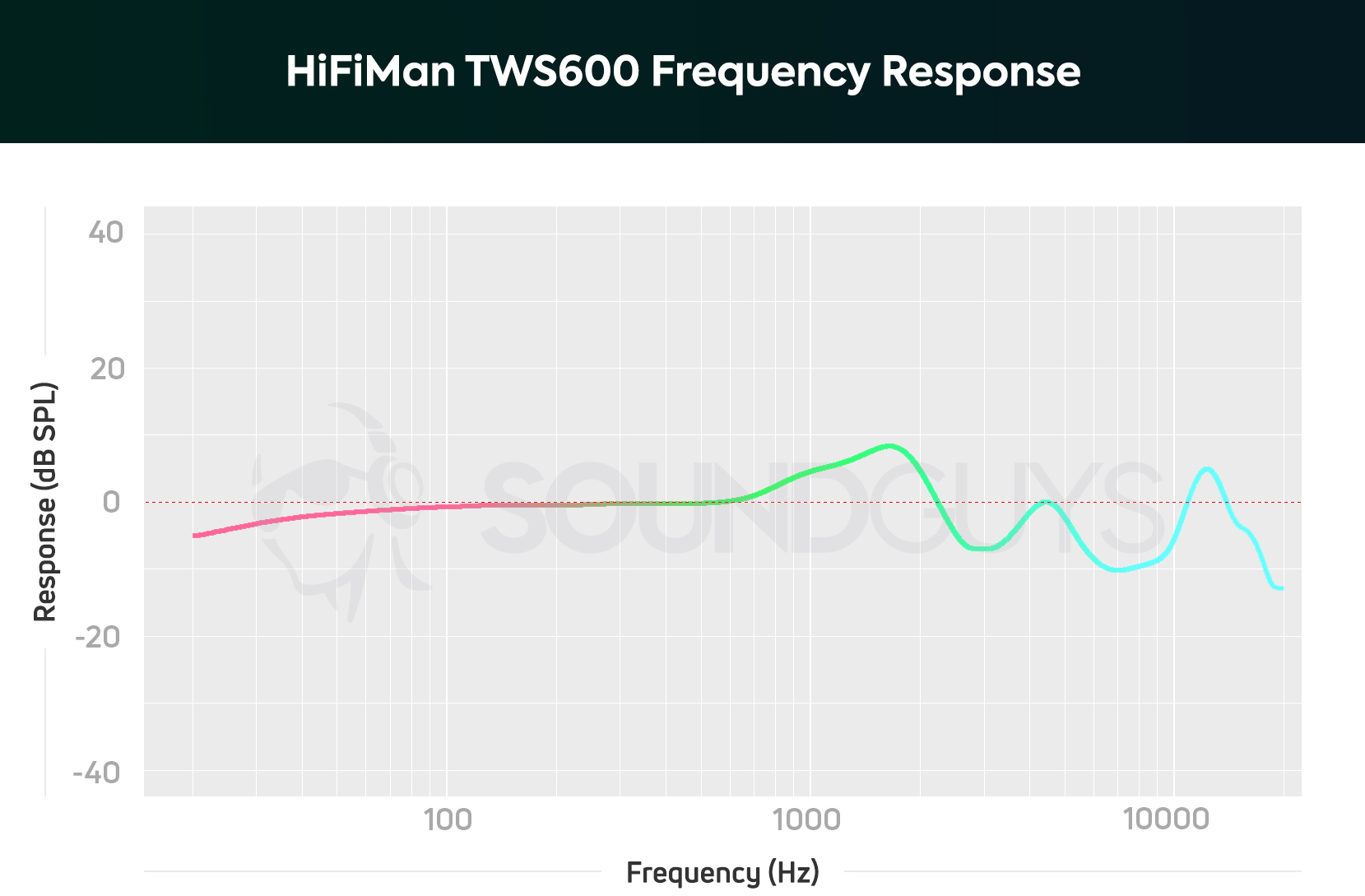
Depends what you’re looking for, really: it seems a lot of the TWS600 budget went into prioritizing signal strength rather than the sound tuning. It’s hard to see what HIFIMAN was going for, outside of low-end reproduction. The response doesn’t fit the usual targets or features you’d see from a house sound.
Users who don’t listen to music with a lot of highs like female vocalists and soft acoustic stringed instruments will probably not care about those peaks in the highs all that much, but that’s not a guarantee. Most of the reviews of these online note that they’re bass-light. They’re not: it’s just that the higher frequencies are oddly over-emphasized, making the lows sound quieter by comparison.
Related: How to read charts
The earbuds sound fine enough for their current cost, but I wouldn’t have guessed these to command a high pricetag going off of sound quality alone. Lows and mids are reproduced accurately and are certainly the most pleasing notes rendered by earphones but, the lack of clarity coming through is upsetting.
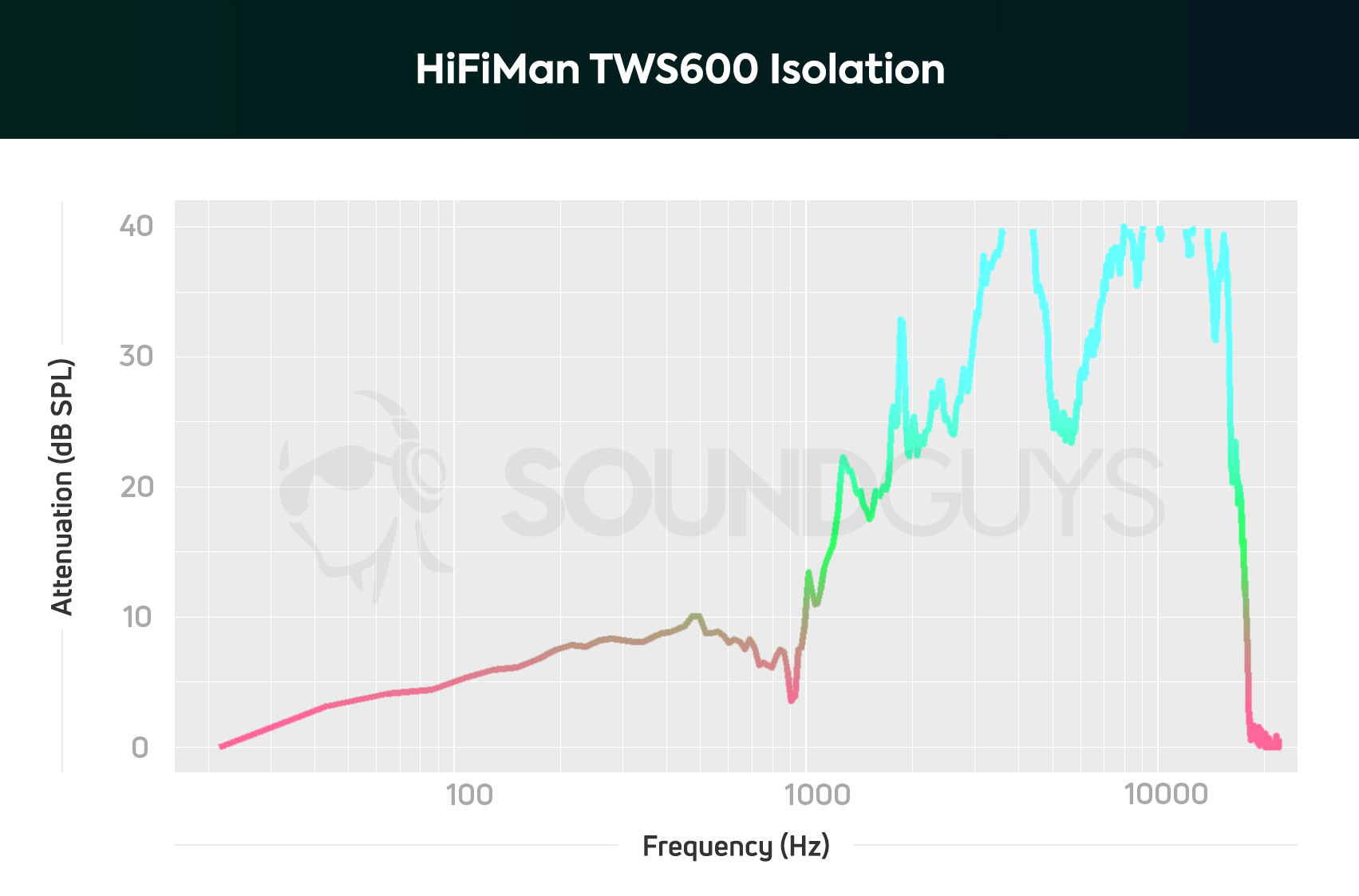
Isolation, on the other hand, is stellar. HIFIMAN supplies listeners with a wide range of ear tips including made to fit nearly any listener’s ears. You’re really going to want to find a proper fit here because in-ears depend on a perfect seal to get their isolation and sound quality where it needs to be. Any external noise that makes it past the physical barrier of your earbuds will degrade bass notes first, so the TWS600 is pretty good in this regard.
Lows, mids, and highs
Brother Moses’ song Sandwich Bags begins with individually plucked guitar strings before James Lockhart starts singing. Even during those first 12 seconds of the song, the guitar’s subsequent resonances are hard to perceive. This same pattern is made even less clear at 0:52, when the rest of the band joins in. At this point, the listener is introduced to a gentle drum pattern that fails to stand out from the din.
Low-end attenuation can be preferential but not how it’s done here. The lack of clarity was distracting and made me feel like my ears were clogged anytime I used the HIFIMAN TWS600. Again, it’s a sound we’ve come to expect from sub-$50 earphones, but we’re talking $80 ‘buds here.
Is the microphone good for calls?
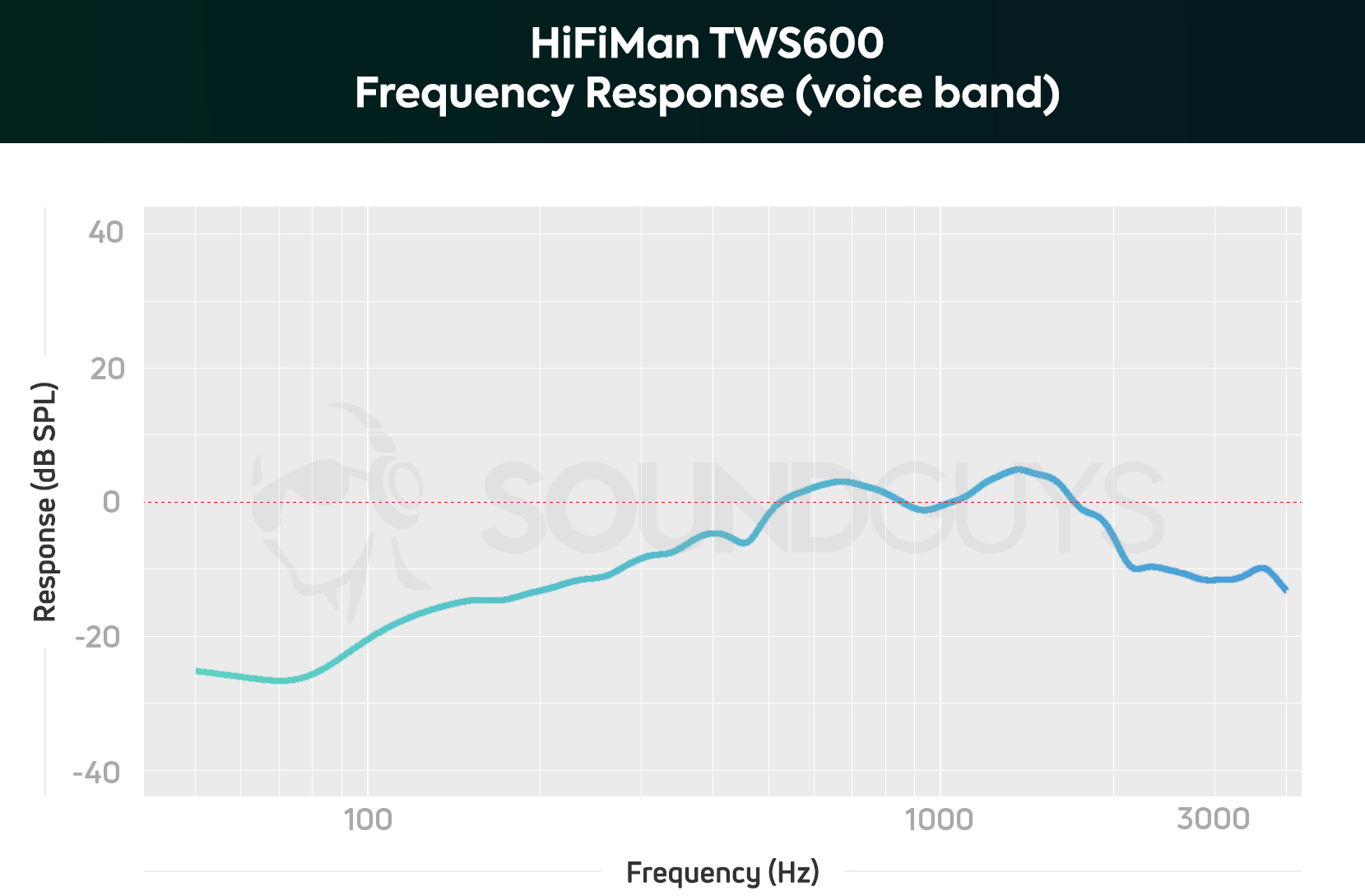
The integrated microphone system is fine, but like any other true wireless earphones: nothing special. Sometimes companies attenuate low-end frequencies strategically as a means of counteracting the proximity effect (we’ve seen this with the Shure AONIC 50,) but it’s just a standard cheap microphone. Nearly all speakers, no matter the vocal register, will sound “muffled,” and when I took the headset outside, a generous amount of wind noise was picked up which made me sound unintelligible. Again, it’s not terrible in a quiet environment, but there are certainly better setups out there.
HIFIMAN TWS600 microphone demo:
How does the microphone sound to you?
How does the HIFIMAN TWS600 compare to other true wireless headsets?
It compares decently against the competition but definitely isn’t punching above its weight class. Again, the biggest edge the HIFIMAN TWS600 has over cheap and expensive true wireless earbuds is its lag-free audio-visual functionality. If you don’t watch much TV or YouTube, then you’ll find the following are better values.
Are the JLab JBuds Air Icon better than the HIFIMAN TWS600?
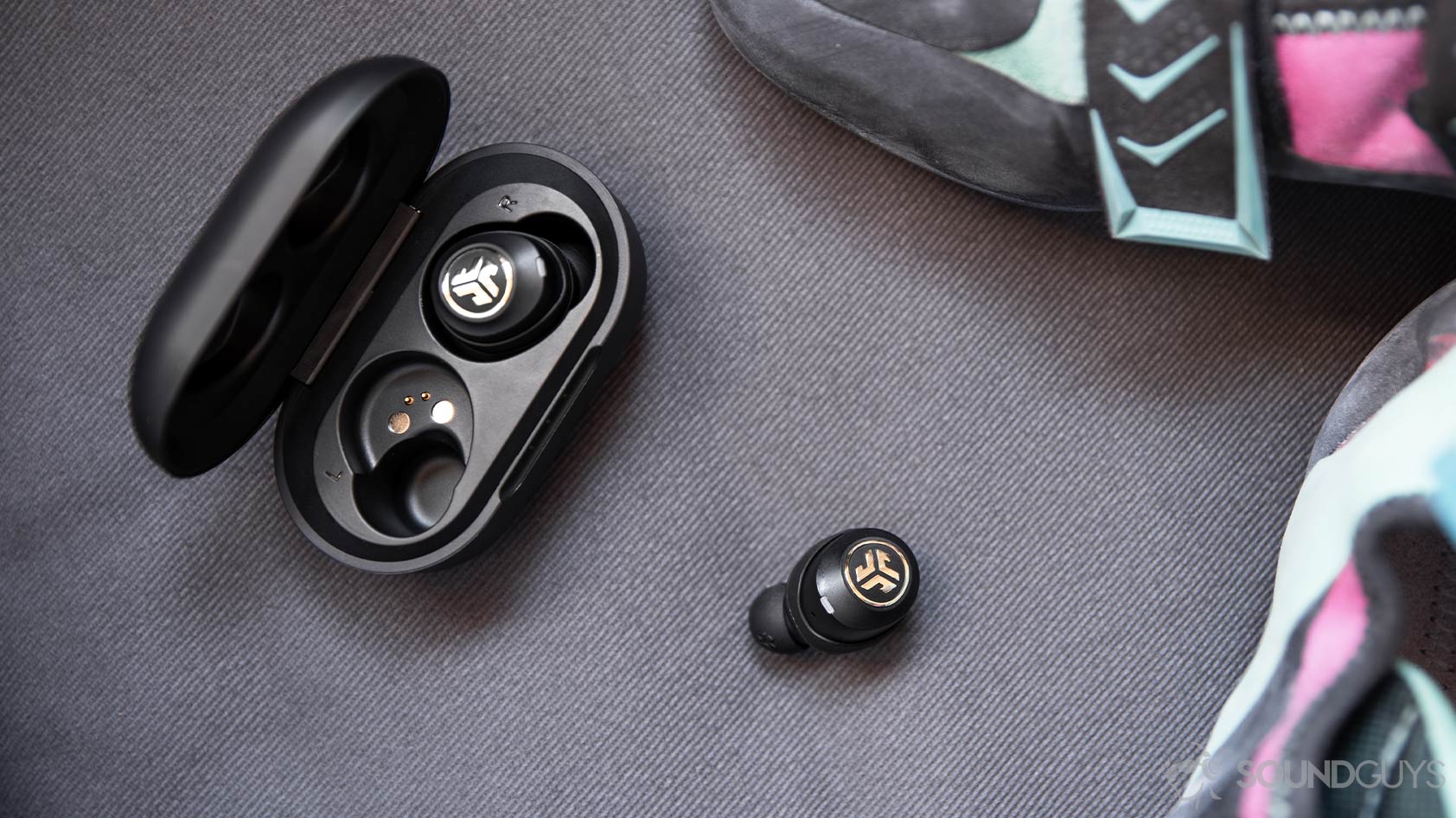
When it comes to an all-around pair of headphones, the JLab JBuds Air Icon is the better choice because it’s more durable (IP55 compared to the TWS600’s IPX4 rating), has a more consumer-friendly sound signature, and is $20 cheaper. Although you aren’t afforded nearly as many ear tip options, you do get a handful of CushFins, which are proprietary wing tips that keep the housings in place. Microphone quality is about the same between the two headsets—which is to say it’s not great.
Although the HIFIMAN TWS600 earphones have a more technically impressive wireless range, the JLab JBuds Air Icon’s connection is more consistent. Both are Bluetooth 5.0 headsets limited to AAC and SBC codec support, but sound quality is clearer with JLab’s earbuds despite the marked bass emphasis. This isn’t to say the HIFIMAN TWS600 is the wrong choice for you, it just doesn’t offer quite as good of a value as JLab’s earbuds.
How do the Anker Soundcore Liberty Air 2 compare to HIFIMAN’s true wireless earbuds?
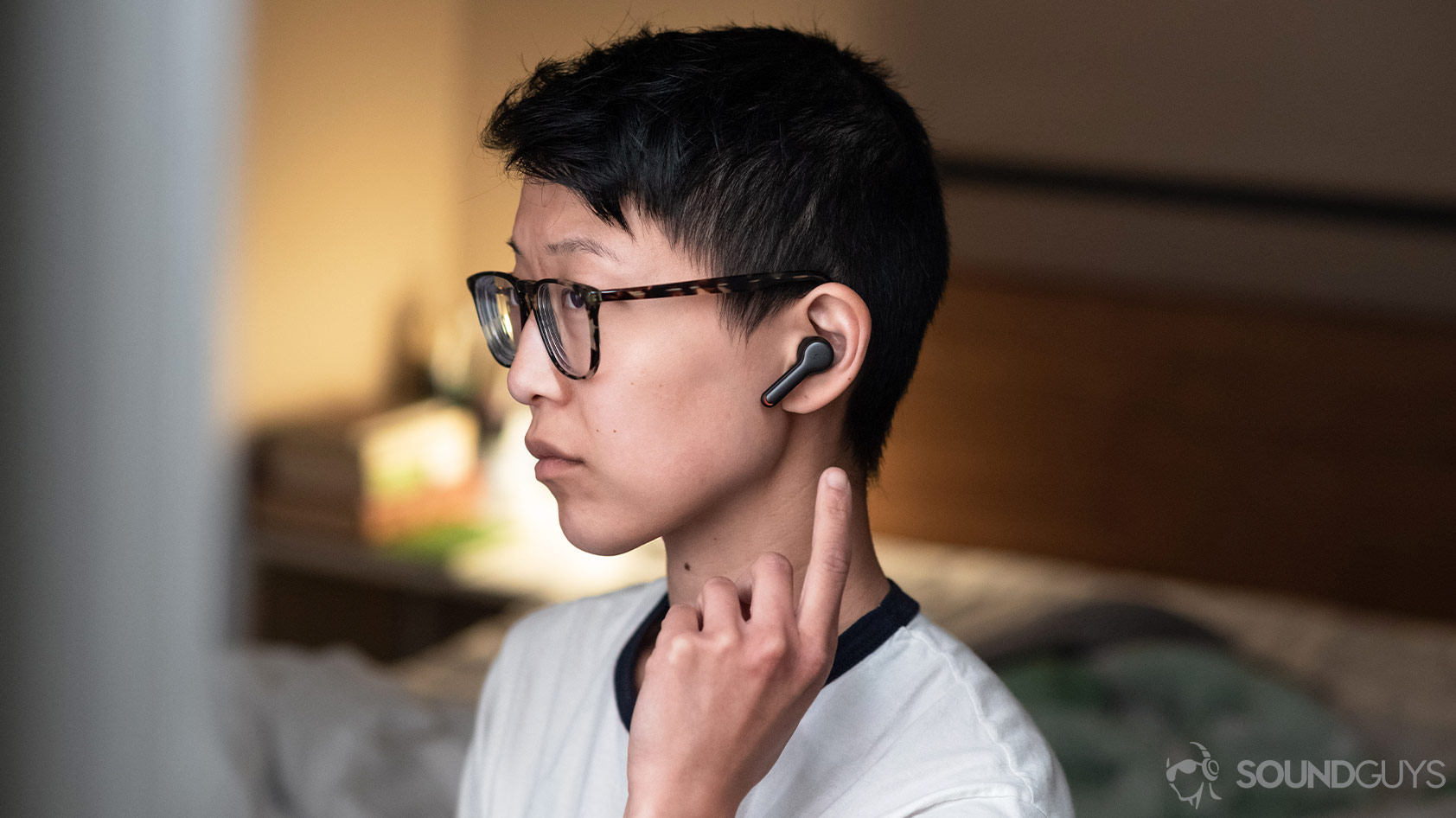
The Anker Soundcore Liberty Air 2 runs with everything that was great about the original Liberty Air and features new improvements. The Liberty Air 2 offers 40% more battery life on a single charge than the HIFIMAN TWS600, and has great touch controls alongside an improved microphone system. You may still want to go with HIFIMAN, though, because the Anker earphones are $100.
Should you buy the HIFIMAN TWS600?
Anyone who spends their free time streaming videos from their laptops or smartphones will thoroughly enjoy the lag-free experience the HIFIMAN TWS600 offers. The design is also a nice touch for the right audience, but it’s hard to justify spending $80 on a pair of earbuds that struggles to outperform $50 true wireless alternatives.
Should you get these cheap true wireless earbuds or upgrade to a more premium headset?
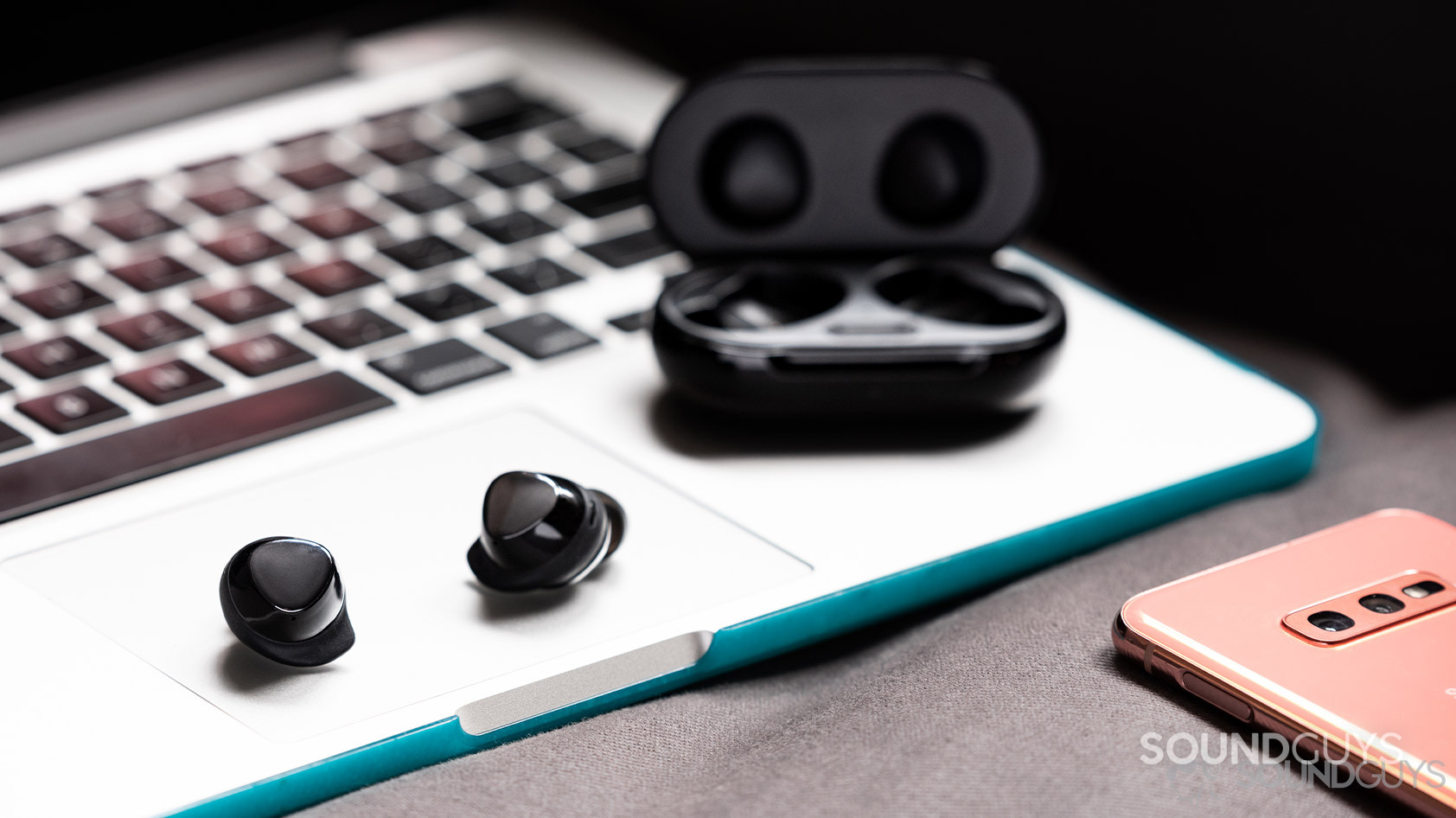
If you like the idea of compact earbuds, consider the Samsung Galaxy Buds Plus: these earbuds boast over 11 hours of playtime on a single charge, and stand as one of the most comfortable sets of earphones around (save for the Samsung Galaxy Buds Pro). AKG tuned the dynamic drivers which yields a pleasing, consumer-friendly sound that you can alter from the mobile app. The IPX2 rating isn’t very impressive, but the build is resistant enough to withstand most workouts.
If money is no object, save up for a pair of premium noise canceling true wireless earbuds instead. Some of our favorites include the Apple AirPods Pro, Bose QuietComfort Earbuds, Sennheiser MOMENTUM True Wireless 2, and Sony WF-1000XM3.